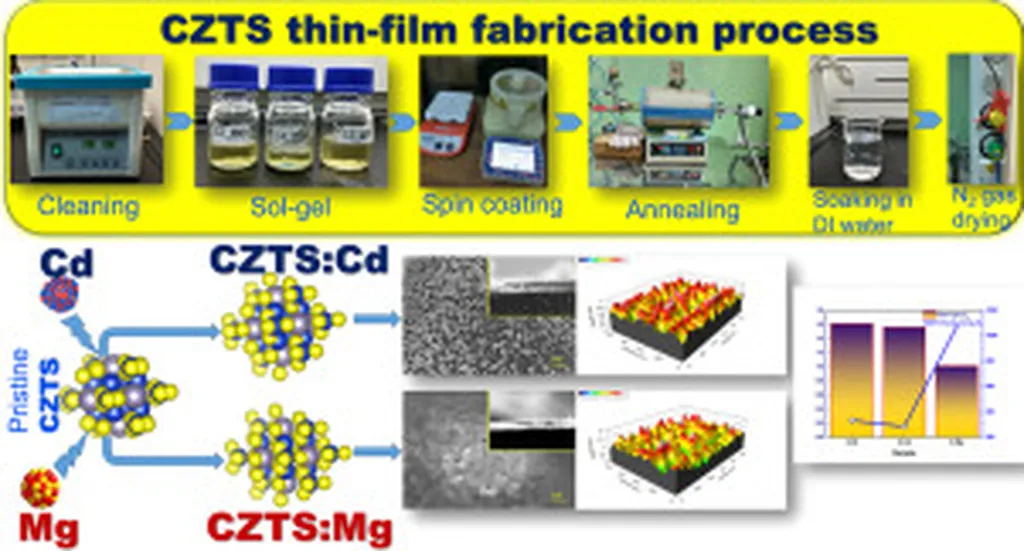In the pursuit of affordable and sustainable solar energy solutions, researchers have long been captivated by kesterite Cu2ZnSnS4 (CZTS) thin films. These materials promise a greener alternative to traditional solar technologies, but their efficiency has lagged behind. A recent study published in the journal “Applied Surface Science Advances” (translated from Persian as “Advances in Surface Science”) sheds new light on how calcium doping could revolutionize the optical properties of CZTS thin films, potentially paving the way for more efficient and cost-effective solar cells.
At the heart of this research is Mohammad Arab, a materials engineer from the Department of Materials Engineering at Malek Ashtar University of Technology in Isfahan, Iran. Arab and his team have been exploring the effects of calcium doping on CZTS thin films, synthesized using the cost-effective spray pyrolysis technique. Their findings suggest that incorporating calcium into these films could significantly enhance their optical performance, a critical factor in improving solar cell efficiency.
The study systematically investigated the impact of calcium doping, ranging from 1% to 4% by weight, on the structural and optical properties of CZTS thin films. The researchers employed a variety of characterization techniques, including XRD, AFM, FESEM, EDX, DRS, FTIR, and Raman spectroscopy, to gain a comprehensive understanding of the changes induced by calcium incorporation.
One of the most striking findings was the enhancement of effective absorption in the visible spectrum with increasing calcium doping. “The increase in optical conductivity with higher Ca doping suggests that calcium improves the optical response of CZTS thin films,” Arab explained. This improvement in optical properties is crucial for solar cell applications, as it directly impacts the amount of sunlight that can be converted into electricity.
Moreover, the study revealed that calcium doping reduces the band gap of the CZTS absorber, reaching 1.41 eV at a 4% calcium concentration. This narrowing of the band gap is significant because it brings the material closer to the optimal range for solar energy conversion. “The reduction in band gap with calcium doping is a promising result,” Arab noted. “It indicates that we are moving closer to the ideal properties for high-efficiency solar cells.”
Structural analysis confirmed that the thin films maintained their kesterite structure even with calcium doping. However, surface morphology analysis showed that increased calcium doping led to higher surface roughness. While this roughness could enhance photon absorption, it might also pose challenges for the interface between the absorber and buffer layers. “Balancing these factors will be key to optimizing the performance of CZTS solar cells,” Arab remarked.
The implications of this research are far-reaching for the energy sector. As the world continues to seek sustainable and affordable energy solutions, the development of efficient and low-cost solar technologies becomes increasingly important. The findings from this study could guide future efforts to enhance the performance of CZTS solar cells, making them a more viable option for large-scale deployment.
In the quest for cleaner energy, every breakthrough brings us one step closer to a sustainable future. The work of Mohammad Arab and his team represents a significant stride in this direction, offering new insights into the potential of calcium-doped CZTS thin films. As the solar industry continues to evolve, these findings could play a pivotal role in shaping the next generation of solar technologies.

